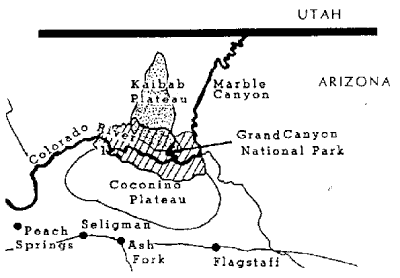 |
Science Frontiers ONLINE No. 44: Mar-Apr 1986 |
|
|
Squirrels As Measures Of Geological Time
Over a century ago, when the truth of biological evolution via natural selection was hotly debated, the proponents of Darwinism were delighted when the geologists presented them with almost endless periods of time in which evolution could progress in small steps from species to species. Now, in a strange turn-about, a creationist writer is using evolutionary theory to infer a very short history for the formation where geologists want a good deal of time. We quote from the conclusion of J.R. Meyer:
"If any group of animals were ever going to undergo significant degrees of evolution from parent stock and obtain resultant speciation, surely the Kaibab squirrel would be one of the more likely candidates. Supposedly isolated from their neighbors for hundreds of thousands of generations over a period of at least several million years, and significantly violating virtually every restriction of the Hardy-Weinberg equilibrium for the non-evolving population, these organisms, even by creationist standards, should have undergone significant and detectable changes. In reality all they show are moderate changes, primarily in two coat color characteristics for part of their population. To make things even worse, this species is known to have a highly variable coat-color polymorphism throughout its range. Thus, even the differences displayed appear to be easily accounted for by several mutations and a slight change in gene frequency for one or two loci, all occurring in a limited period of time."If an organism such as the Kaibab squirrel is able to escape all but a few minor changes in coat color (and these of dubious survival value) given the supposed immense time of rather complete isolation and violation of the Hardy-Weinberg equilibrium, we must ask wherein lies the fault. Is it in the violation of the Hardy-Weinberg concept, or is it in the time alloted for gene pool changes to occur?"
Meyer answers his questions by stating that the Hardy-Weinberg equilibrium concept seems reasonably well-founded, so that the problem must lie in the length of time estimated for the Kaibab squirrel's isolation from surrounding populations. In effect, Meyer concludes that the Grand Canyon is much younger than generally supposed.
(Meyer, John R.; "Origin of the Kaibab Squirrel," Creation Research Society Quarterly, 22:68, 1985.)
 | The Kaibab squirrel is isolated in the Kaibab Plateau (60 x 35 miles in extent). South of the canyon and elsewhere, the similar Albert squirrels may be found. |